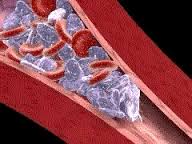Captopril Effects on Pulmonary and Systemic Hemodynamics
 Studies in animals have demonstrated that angiotensin II is a potent pulmonary vasoconstrictor and may play a role in mediating hypoxic pulmonary vasoconstriction. The lung is a major source of production of angiotensin II from the circulating precursor, angiotensin I. Angiotensin-converting enzyme in the lung is closely associated with the endothelial cells of the pulmonary vasculature, and hence, is ideally suited for the regulation of blood flow in the lung.
Studies in animals have demonstrated that angiotensin II is a potent pulmonary vasoconstrictor and may play a role in mediating hypoxic pulmonary vasoconstriction. The lung is a major source of production of angiotensin II from the circulating precursor, angiotensin I. Angiotensin-converting enzyme in the lung is closely associated with the endothelial cells of the pulmonary vasculature, and hence, is ideally suited for the regulation of blood flow in the lung.
Berkov has shown that angiotensin II, in doses that were in themselves subpressor, augmented hypoxic vasoconstriction in the isolated perfused rat lung. Angiotensin II was the most potent of several vasoactive agents studied. Alexander et al found that infusion of angiotensin I or II caused a threefold increase in the vasoconstrictive response to hypoxia over control levels. Experiments were done on blood-perfused isolated dog lungs. Zakheim et al demonstrated that inhibition of angiotensin II formation prevents pulmonary vascular changes induced by chronic alveolar hypoxia in rat. Weir and Chesler found a reduction of hypoxic pulmonary vasoconstriction using captopril in dog experiments, but Hales et al and Previtt and LefHer were not able to confirm positive effects of saralasin or captopril in preventing hypoxic pulmonary vasoconstriction.
